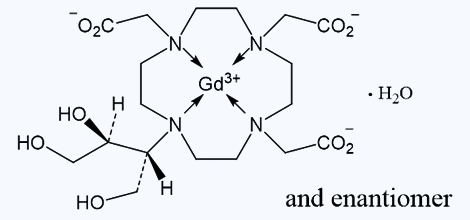Mechanism of Action :
In MRI, visualization of normal and pathological tissue depends in part on variations in the radiofrequency signal intensity that occurs with:
- Differences in proton density
- Differences of the spin-lattice or longitudinal relaxation times (T1)
- Differences in the spin-spin or transverse relaxation time (T2)
When placed in a magnetic field, Gadavist shortens the T1 and T2 relaxation times. The extent of decrease of T1 and T2 relaxation times, and therefore the amount of signal enhancement obtained from Gadobutrol, is based upon several factors including the concentration of Gadobutrol in the tissue, the field strength of the MRI system, and the relative ratio of the longitudinal and transverse relaxation times. At the recommended dose, the T1 shortening effect is observed with greatest sensitivity in T1-weighted magnetic resonance sequences. In T2*-weighted sequences the induction of local magnetic field inhomogeneities by the large magnetic moment of gadolinium and at high concentrations (during bolus injection) leads to a signal decrease.
Indication :
Gadobutrol is a gadolinium-based contrast agent indicated for use with magnetic resonance imaging (MRI):
- To detect and visualize areas with disrupted blood brain barrier (BBB) and/or abnormal vascularity of the central nervous system in adult and pediatric patients (including term neonates)
- To assess the presence and extent of malignant breast disease in adult patients
- To evaluate known or suspected supra-aortic or renal artery disease in adult and pediatric patients (including term neonates)
- To assess myocardial perfusion (stress, rest) and late gadolinium enhancement in adult patients with known or suspected coronary artery disease (CAD)
